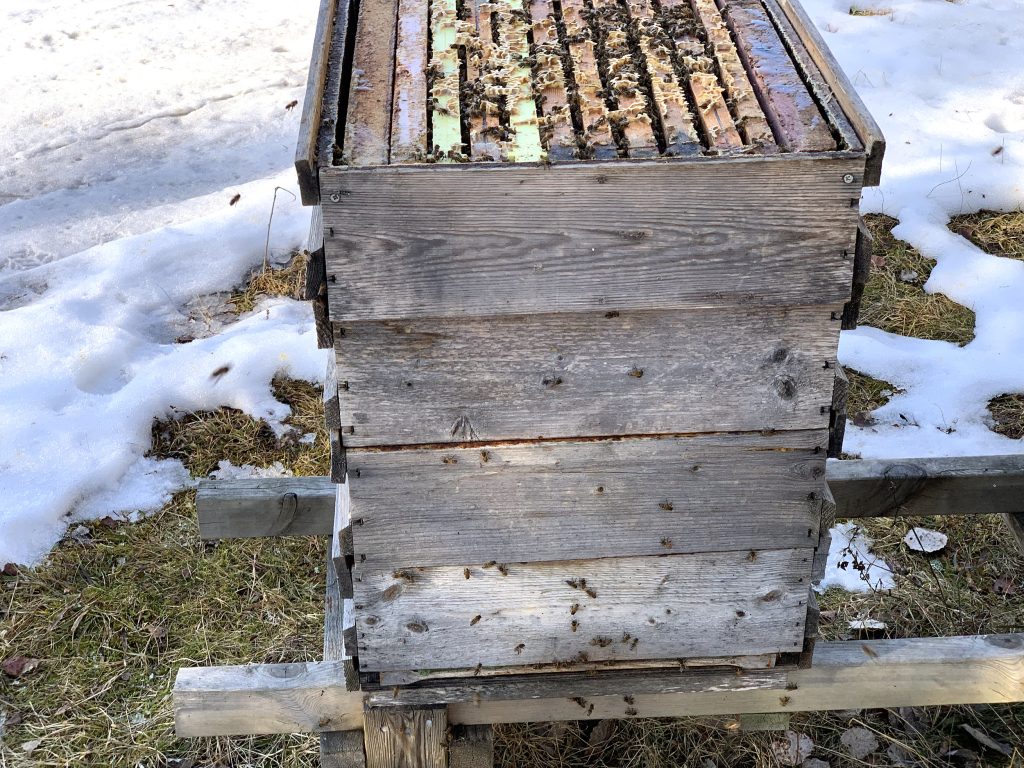Finally! No treatment! One loss!
I have had a long journey to achieve treatment-free bees. I’m obviously thinking of the varroa mite.
In 1989, breeding material was retrieved in Kenya:
It took until 2007 before the varroa mite was discovered in my apiary. I had selected for varroa resistance with the help of beekeepers who had the mite in their hives. Now I could select myself.
I had also prepared for the arrival of the mite by taking down my bees to small cell size. Was it good?:
https://elgon.es/norwegian_celltest.html
https://elgon.es/naturalcellsize.html
I live in a quite densely populated area (concerning bees for being Sweden) and I had many bee colonies in my apiaries. By the spring of 2009, 50% of my bee colonies had died. I decided to treat against varroa with home-made thymol pads:
https://elgon.es/gradualresistance.html
https://elgon.es/resistancebreeding.html
My breeding developed as I gained more experience. There are many factors to consider:
https://elgon.es/varroalevel.html
https://elgon.es/helpingresistance.html
https://elgon.es/guidelines.html
In principle, the selection can be simplified to be summarized in two traits:
The focus was on reducing the number of colonies of the entire population that needed treatment each year. I had chosen home made thymol pads as it seemed to be a method where it was possible to reduce the use in a simple way. Experience has confirmed this hypothesis. Over several years, the use decreased on average, but the curve went up and down a bit from year to year.
The number of crippled winged bees (deformed wing virus-bees; DWV-bees) did not increase from week to week as they began to appear in front of the entrance on the hard board 0.5 x 0.5 meter that was placed there there. The DWV-bees occurred mainly during the latter part of the season, but when the resistance increased in the bee colonies, the number of wingless bees could be the same few in numbers for a few weeks and then disappear.
In the 2020 and 2021 seasons, the most inferior 7 and 4 colonies, respectively, were moved to apiaries far from other bees (no reinvasio risk of mites to and from). The strange thing happened that in 2020, only three colonies out of the 7 were judged to need only a little treatment. In 2021, none of the moved bees were treated.
The area in Hallsberg with only Elgon bees of about 10 x 15 km has 350 Elgon colonies. In total, in 2021 a few percent of these 350 colonies were treated. None of my 90 colonies were treated!
For several years, the annual losses of bee colonies here have been below 10%.
This year, the losses among my untreated bees is 0% in March! It has not happened in many years, long before the varroa arrived!
One group of bee colonies was last treated in 2015. These different groups of bees have not differed how well tey have wintered. Many of colonies were wintered on 4 boxes 12-frame shallow. Many bee colonies are full of bees now in middle of March.

An important factor is a good amount of food for the winter, at least 15 kg of honey, plus 10 kg of sugar in solution. Then the bees will always find food during the winter. The bees will dare to breed strongly as soon as the weather and the season stimulate them to do so. Thus they will be strong and ready to collect a good crop when the first big nectar flow for the season comes.